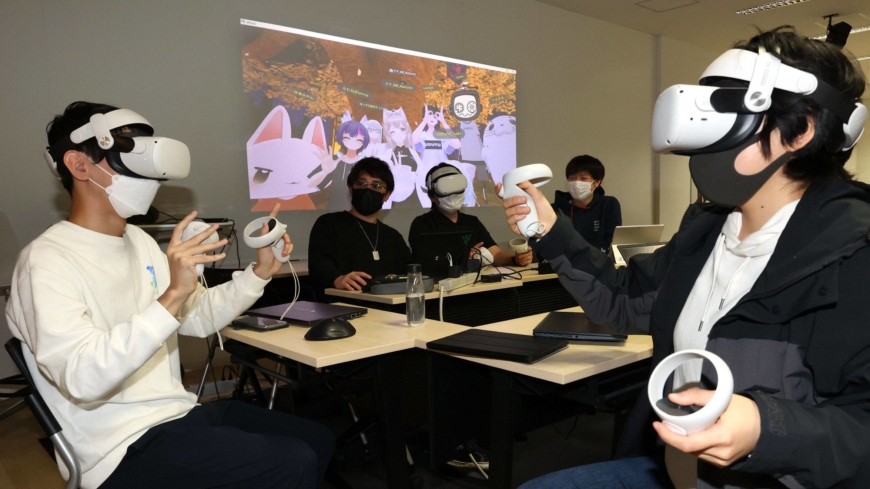While widespread acceptance of future technology is still uncertain, teaching uses VR.
While new technology in this area struggles to find its place in the actual world, educators in Asia are dipping a toe into the much-hyped metaverse, a virtual environment where people may connect socially online.
From South Korea to Taiwan, educational institutions are utilizing the metaverse as a teaching tool, experimenting with VR programs to extend the boundaries of the classroom and develop novel methods of knowledge and skill transfer.
In order to offer training courses in cyberspace, Pohang University of Science and Technology in South Korea is attempting to transform into a “metaversity,” where classrooms are digitally transformed into the metaverse.
The institution, often known as POSTECH, educates 1,400 undergraduate and 2,100 graduate students. These students collaborate with 450 academic members and 650 researchers in a variety of subjects, including energy, materials, fundamental science, information, communications technology, and health.
According to Moo Hwan Kim, the university’s president, “virtual reality technology can be applied in fields that are difficult to access in reality, such as outer space and the nanoworld.” Long-term, it will be able to take the place of courses that call for more practical training or instruction in hazardous conditions.
POSTECH claimed to invest $500,000 to create schools that use the metaverse in addition to $300,000 annually for purchasing technology and creating instructional programs for pupils.
Over 6,000 students learn using VR headsets at N and S high schools in Japan, the largest online high schools in the nation.
According to director Riichiro Sono, the organization used the metaverse to conduct courses free from physical restraints and to provide an immersive learning environment for each individual.
Although he acknowledged that “it can take time for users to get accustomed to a VR environment” and that “the additional weight of a VR headset can be a deterrent” for certain users, the schools’ poll of VR participants last year revealed a satisfaction rate of 98.5%.
As several Asian nations try to raise the bar on digital proficiency, more schools are adopting the metaverse.
South Korea’s science ministry said last year that it plans to invest 223.7 billion won ($166 million) to foster a metaverse ecosystem, including developing a “Metaverse Academy” to train young experts in the field.
Likewise, Japanese Prime Minister Fumio Kishida said last year that his country would promote efforts to expand the use of various technologies, including the metaverse, to spur digital transformation in the public and private sectors.
Singapore has a national digital literacy program that aims to equip students with skills to navigate a digital society and take on the jobs of the future.
VR’s potential for widespread use is still unclear. With the promise of the metaverse, American digital behemoth Meta, which rebranded from Facebook in 2021, has had difficulty proving the metaverse’s sustainability in recent months.
Only one-third of respondents to a 2022 worldwide poll of executives from the technology, media, and telecoms industries said their companies feel ready with platforms to develop applications for the metaverse.
In addition to traditional schooling, the metaverse has been utilized to aid in the deeper knowledge of issues that often affect society’s least fortunate members.
The Syinlu Social Welfare Foundation, a non-profit organization in Taiwan that provides expert assistance for children with intellectual or mental disabilities and their families, is utilizing virtual reality to increase awareness and educate others about people with autism.
The director of the foundation, Lydia Liu, said that the organization uses the metaverse to provide the general public with a first-person view through immersive digital settings so they may experience what people with autism go through on a daily basis.
Our aim, according to Liu, is to foster empathy and enable others to comprehend the discomfort and difficulty that autistic people could experience.





